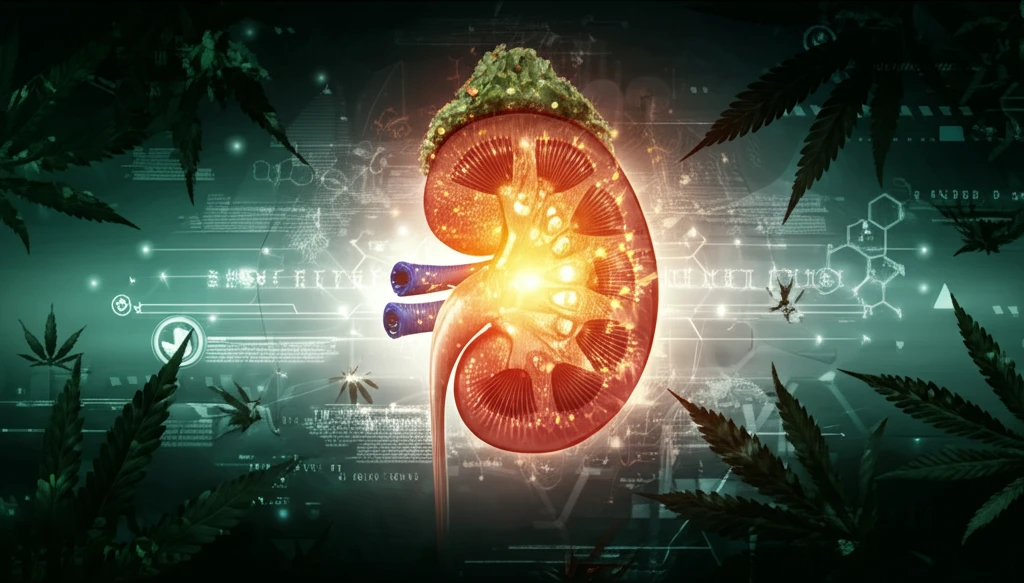
Kidney Health: Can Cannabis Compounds Offer a New Path to Recovery?
"Exploring the potential of 2-Arachidonoylglycerol (2-AG) in treating acute kidney injury and improving renal function through cannabis research."
Acute kidney injury (AKI) poses a significant threat to global health, associated with increased morbidity and mortality. Ischemia-reperfusion injury (IRI), a condition where blood supply is restored to tissue after a period of oxygen deprivation, is a leading cause of AKI. Current treatments often fall short, highlighting the urgent need for innovative therapies that can protect and restore kidney function.
Recent research has turned to the endocannabinoid system (ECS) for potential solutions. The ECS, a complex network of receptors and signaling molecules, plays a crucial role in regulating various physiological processes, including inflammation and oxidative stress, both key factors in kidney injury. Cannabinoid compounds, known for their interaction with the ECS, have shown promise in mitigating these harmful processes.
This article explores the groundbreaking study led by Hamid Moradi et al., which investigates the role of 2-Arachidonoylglycerol (2-AG), a major endocannabinoid, in a mouse model of acute kidney injury. The study sheds light on how increasing 2-AG levels can improve renal function, offering new perspectives on treating kidney diseases and paving the way for future therapeutic interventions.
Unlocking the Potential of 2-Arachidonoylglycerol (2-AG) for Kidney Health

The study by Moradi et al. focused on understanding how 2-AG, an endocannabinoid naturally produced in the body, affects renal IRI. To conduct their research, the scientists induced renal ischemia in mice, mimicking the conditions of AKI. They then administered JZL184, a compound known to increase 2-AG levels by inhibiting its breakdown. This allowed them to observe the effects of elevated 2-AG on kidney function and overall damage.
- Serum Creatinine and Blood Urea Nitrogen (BUN): These are standard markers used to evaluate kidney function. Elevated levels typically indicate impaired kidney function.
- Renal Tubular Damage: Histological analysis was performed to assess the structural damage to kidney tubules, which are essential for filtering waste and maintaining fluid balance.
- Markers of Inflammation and Oxidative Stress: The expression of various inflammatory cytokines and enzymes involved in oxidative stress were measured to determine the level of inflammation and cellular damage in the kidneys.
- Endocannabinoid Levels: The levels of 2-AG and other endocannabinoids in the kidney tissue were quantified to assess the impact of IRI and JZL184 treatment.
Future Directions and Therapeutic Implications
This study opens new avenues for exploring the therapeutic potential of targeting the endocannabinoid system in kidney diseases. While further research is needed to fully understand the mechanisms behind 2-AG's protective effects, the findings suggest that modulating 2-AG levels could be a promising strategy for improving renal function and reducing kidney damage. Future studies should focus on identifying specific pathways through which 2-AG exerts its protective effects, as well as exploring the potential of other cannabinoid compounds in treating kidney diseases. This research highlights the importance of continued exploration into cannabis-related compounds and their potential to revolutionize treatment approaches for critical health conditions.
